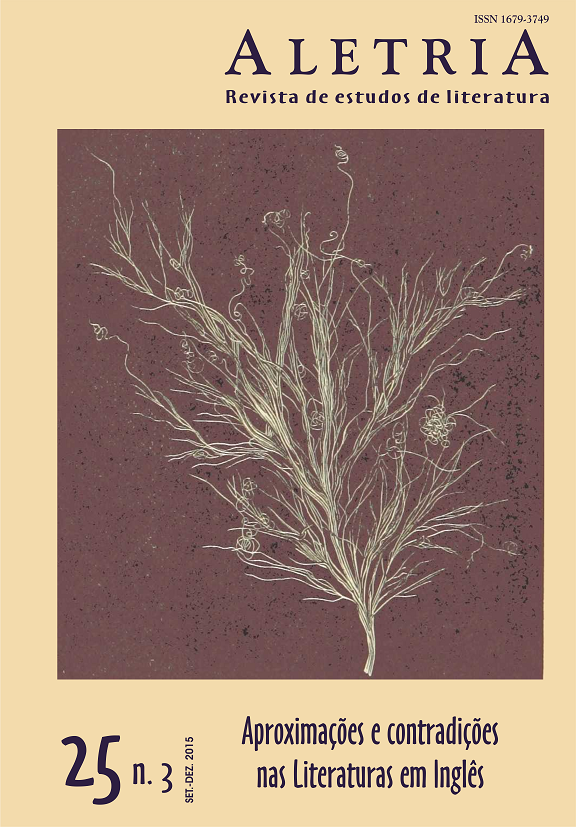Filhos de Oryx, filhos de Crake, filhos dos homens: redefinindo a pós-/transumanidade na trilogia “ustopiana” MaddAddam, de Margaret Atwood
DOI:
https://doi.org/10.17851/2317-2096.25.3.133-146Palavras-chave:
transhumanismo, , trilogia MaddAddam, ficção pós-apocalípticaResumo
Um dos principais pilares do pensamento pós-humano e transumano é o uso da tecnologia como meio de melhorar a vida humana ao auxiliar na superação de falhas e limitações do corpo biológico. O efeito de tais tendências tem sido central ao desenvolvimento de romances distópicos contemporâneos, de terceira virada, em inglês, publicados nos últimos trinta anos, aproximadamente. Entretanto, um aspecto importante de tais narrativas também é seu rol de características transgressoras, que as distanciam de seus equivalentes modernos, de segunda virada. O presente artigo almeja discutir o quão transgressoras são as ideias de distopia e transumanismo que formam a base da trilogia MaddAddam, de Margaret Atwood, essencialmente discutindo o que encontra-se no núcleo da condição humana.
Referências
ATWOOD, Margaret. Oryx and Crake. New York: Anchor Books, 2003.
ATWOOD, Margaret. The year of the flood. New York: Anchor Books, 2009.
ATWOOD, Margaret. In other worlds: SF and the human imagination. London: Virago, 2011.
ATWOOD, Margaret. MaddAddam. London: Bloomsbury, 2013.
BOUSON, J. Brooks. “It’s game over forever”: Atwood’s satiric vision of a bioengineered posthuman future in Oryx and Crake. In: BLOOM, Harold (Ed.). Bloom’s modern critical views: Margaret Atwood. New York: Bloom’s Literary Criticism, 2009.
CLAEYS, Gregory. The origins of dystopia: Wells, Huxley and Orwell. In: CLAEYS, Gregory (Ed.). The Cambridge Companion to Utopian Literature. Cambridge: University of Cambridge Press, 2010.
FUKUYAMA, Francis. The end of history and the last man. New York: Free Press, 1992.
FUKUYAMA, Francis. Our posthuman future: consequences of the biotechnology revolution. New York: Farrar, Straus and Giroux, 2003.
HOWELLS, Coral Ann. Margaret Atwood’s dystopian visions: the Handmaid’s Tale and Oryx and Crake. In: HOWELLS, Coral Ann (Ed.). The Cambridge Companion to Margaret Atwood. Cambridge: Cambridge University Press, 2006.
MARKS DE MARQUES, Eduardo. “God is a cluster of neurons”: neo-posthumanism, theocide, theogony and anti-myths of origin in Margaret Atwood’s Oryx and Crake”. Gragoatá, Niterói, n. 35, p. 155-169, 2. sem. 2013.
MARKS DE MARQUES, Eduardo. I sing the body dystopic: utopia and posthuman corporeality in P.D. James’s The children of men. Ilha do Desterro, Florianópolis, n. 65, p.29-48, jul/dez 2013.
MOHR, Dunja M. Transgressive utopian dystopias: the postmodern reappearance of utopia in the disguise of dystopia”. Zeitschrift für Anglistik und Amerikanistik (ZAA) , Leipzig, v. 55, n.1, p. 5-24, 2007.
WOLFE, Cary. What is posthumanism? Minneapolis: University of Minnesota Press, 2009.
Downloads
Arquivos adicionais
Publicado
Edição
Seção
Licença
Copyright (c) 2016 Eduardo Marks de Marques (Autor)

Este trabalho está licenciado sob uma licença Creative Commons Attribution 4.0 International License.
Autores que publicam nesta revista concordam com os seguintes termos:Autores mantém os direitos autorais e concedem à revista o direito de primeira publicação, com o trabalho simultaneamente licenciado sob a Licença Creative Commons Attribution que permite o compartilhamento do trabalho com reconhecimento da autoria e publicação inicial nesta revista.Autores têm autorização para assumir contratos adicionais separadamente, para distribuição não-exclusiva da versão do trabalho publicada nesta revista (ex.: publicar em repositório institucional ou como capítulo de livro), com reconhecimento de autoria e publicação inicial nesta revista.Autores têm permissão e são estimulados a publicar e distribuir seu trabalho online (ex.: em repositórios institucionais ou na sua página pessoal) a qualquer ponto antes ou durante o processo editorial, já que isso pode gerar alterações produtivas, bem como aumentar o impacto e a citação do trabalho publicado (Veja The Effect of Open Access).





